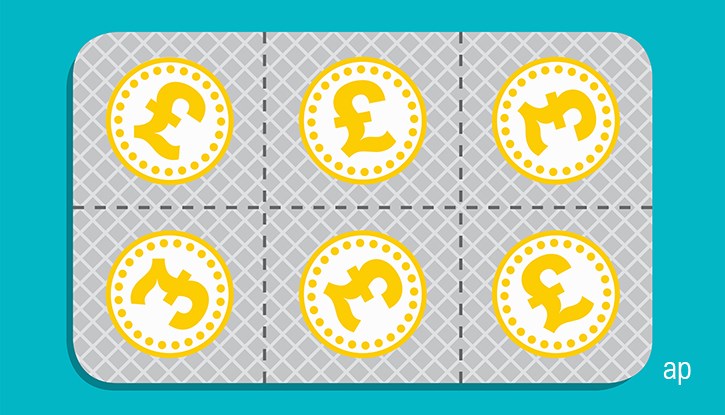
Investors are more than ever using exchange traded funds and index trackers to access markets and themes, and the search for income is no exception. Our recent special report featured three passive funds for your Isa, and now Morningstar experts have picked three ETFs for income, which include two equity funds and one emerging market bond fund.
Fidelity Global Quality Income ETF (FGQI) – Silver
This Fidelity ETF has a Morningstar Analyst Rating of Silver, currently yields 2.49% and pays dividends to investors on a quarterly basis. In the last three calendar years and in the year to date, the ETF has beaten its Morningstar Global Equity Income category and the benchmark, the MSCI World High Dividend Yield index – and produced a return of 6.8% last year in the worst period for dividends in decades. “Fidelity Global Quality Income ETF is a solid choice for investors seeking to harness the potential of dividend investing,” says Morningstar passive funds analyst Dimitar Boyadzhiev, who says the fund is well diversified and competitively priced.
In terms of the portfolio, US equity makes up the lion’s share with a 66% weighting, above the Morningstar category (41%) and the index (58%). As fund administration group Link points out, US companies responded to the 2020 dividend crisis by reducing share buybacks rather than cutting payouts, in contrast to their European counterparts, who cancelled and cut billions in payouts. US banks were also allowed to continue making payments, whereas UK and EU regulators froze these dividends for a number of months.
The largest holdings in the ETF are tech giants Apple (AAPL) and Microsoft (MSFT) with weightings of 3.5% and 3.2% respectively, and the fund holds more tech and fewer consumer defensive stocks than its peers.
Vanguard FTSE All-World High Dividend Yield ETF (VHYD) – Bronze
This offering by Vanguard has a Bronze Analyst Rating and is the cheapest global dividend ETF on offer in Europe, according to Boyadzhiev, with an ongoing charge of 0.29%. “We think this low-cost exchange-traded fund offers a sensible approach to gain exposure to global dividend stocks in a single investment,” he says. The ETF tracks the highest-yielding segment of the FTSE All-World Index, which represents up to 95% of the global stock market, but does not screen dividend paying companies based on the sustainability of their payouts – a key issue for investors after last year’s carnage. Still, Morningstar analysts are confident that the ETF can outperform its Morningstar Global Equity Income Category over the long term and that it is well diversified, tracks the index accurately, “While it doesn't screen its holdings for profitability or their dividend payment sustainability, the fund's broad market-cap-weighted portfolio effectively diversifies risk. It also offers an attractive dividend yield [around 2.8%] and is low cost,” says Boyadzhiev.
The Vanguard ETF has a different portfolio weighting to the US-focused Fidelity fund, with 60% of the holdings outside the United States: indeed two emerging market stocks are in the top five holdings, Taiwan Semiconductor Manufacturing and South Korea’s Samsung, both favourites of EM growth managers. Still, like the Fidelity ETF, the Vanguard fund has US investment bank JP Morgan as the third biggest holding.
iShares CNY Bond ETF (CYGB) - Neutral (Q)
Fixed income, traditionally the hunting ground of active managers, has been one of boom areas in ETFs recently, as revealed by flows into this asset class in the crisis months of 2020. The iShares CNY Bond ETF was the top selling exchange traded fund in Europe in 2020, according to Morningstar data, bringing in over €4.5 billion in flows. This ETF is the choice of Jose Garcia Zarate, associate director of passive strategies at Morningstar for our income week.
Most UK investors will already have a decent chunk of their fixed income portfolios weighted towards low-yielding government bonds, so this China ETF allows income seekers to complement their core holdings with a small, tactical allocation to higher-income funds. “Here is where investors can become a bit more imaginative with their bond allocation, which necessarily implies going beyond their comfort zone,” he says. “The appeal of Chinese bonds is two-fold. One is the tasty yield pick-up. The yield on a 10 year China Treasury bond is 3.2% compared to 0.8% for a 10 year UK gilt. The second is that compared to other EM markets, Chinese bonds are proving remarkably resilient.”
While China is still an emerging market – according to equity market classifications – its government bonds are rated by agencies above many developed countries. The ETF’s portfolio is split between China government bonds, which yield up to 3%, and “development banks”, which are state-owned enterprises with investment grade credit ratings. There are a number of share classes to choose from, including hedged and unhedged versions, but the GBP hedged version “would appeal to investors seeking extra protection from FX movements”, Zarate says. The GPB hedged class has an ongoing charge of 0.4%, while the USD unhedged charges 0.35% - and this fund has a Morningstar Qualitative Rating of Neutral.





























